Katsura Tree (Cercidiphyllum Japonicum) Grow & Care Guide
Written by Iris
Jan 29 2023
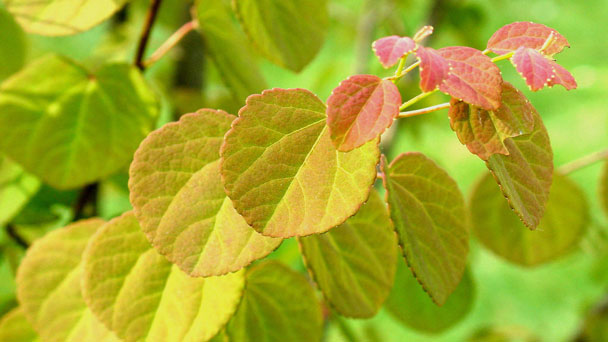
Native to Japan, Katsura Tree (Cercidiphyllum japonicum) is an excellent specimen or shade tree for Midwestern landscapes. Katsura Tree leaves offer a variety of colors throughout the year. The heart-shaped leaves appear reddish-purple in spring and turn turquoise when ripe. The color display changes again in the fall when the leaves turn a transparent yellow or apricot color.
Store the seeds in a paper envelope until early winter, approximately six to eight weeks after the first autumn frost. Keep the paper envelope in a dry, cool place until sowing.
Place the katsura trees seeds in a water-filled bowl. Soak the seeds for several hours to determine which are viable. Remove and discard any floating seeds.
Fill 6-inch pots with a moderately moist mixture of two parts peat, two parts loam and one part perlite. Firm the mix gently, then roughen the surface with your fingertips.
Sow two Katsura Tree seeds in each pot. Gently press them halfway into the surface of the peat mixture. Sprinkle a very thin layer of coarse sand around the seeds but do not bury them since they require light for germination.
Mist the sand liberally with a spray bottle to settle it. Cover each pot with a clear plastic bag. Place the covered pots inside the refrigerator for seven to ten days to chill. Keep the peat mixture barely moist on the surface.
Move the pots to a bright, sheltered area after the chilling period has ended. Choose a location with eight to ten hours of light daily, such as indoors near a large window. Do not expose the pots to direct sunlight.
Warm the pots with a propagation mat set to between 70 and 77 degrees Fahrenheit. Monitor the moisture level of the peat mixture, since the propagation mat will increase evaporation. Water whenever the mixture dries out on the surface.
Watch for germination in 10 to 20 days. Remove the clear plastic after sprouting. Remove the propagation mat in two weeks. Continue to add water whenever the surface of the peat mixture dries out.
Remove one of the Katsura Tree seedlings from each pot once they reach 2 inches in height. Keep the more vigorous of the two and snip the other off at soil level using small scissors.
Grow the Katsura Tree seedlings under bright, sheltered conditions during their first summer. Provide light shade at midday to prevent stress. Transplant them into the ground in autumn six to eight weeks before the first frost.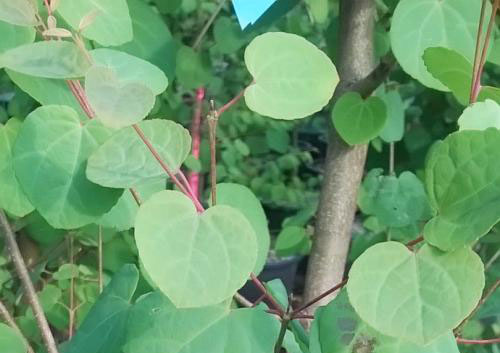
Late spring and early summer are the best times to prepare cuttings from a Katsura Tree.
New growth is still soft and flexible at this stage, so these are softwood cuttings.
Types of cuttings that work well with Katsuratree
Young branches of a cercidiphyllum Katsura Tree, perfect for cuttings.There are two ways to make cuttings from a kastura Cercidiphyllum tree. These are stem cuttings and basal cuttings.
Stem cuttings – aren't very successful, sometimes success rates even drop down to single digits, as in one in ten. But it isn't hopeless at all, since it can also reach much higher levels if the conditions are right.
Basal cuttings – much higher success rate, but often more difficult to properly start. Indeed, these are taken from portions of a branch where stems connect. You can also use suckers that start shooting out from near the base of the trunk.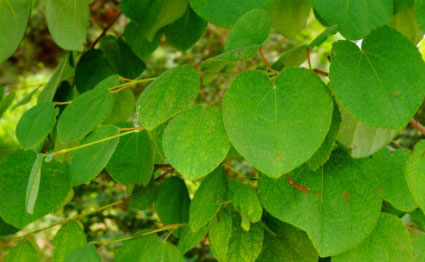
This is especially helpful for those katsura types that are weeping, like the ‘Pendula’ and the ‘Tidal Wave’.
Simply place large pots wherever branches reach to the ground. Given that sometimes branches are too short, you might need to set the pots up on a bench or stool.
Cross a branch across the top of the pot and anchor it down with a metal hoop. Make sure several leaf nodes reach into the pot. If need be, arch the branch down into the pot.
After that, fill the pot with a mix of garden soil and soil mix, heaping it all the way to cover the branch with about 4 inches of soil (10 cm).
Load the soil down with a couple larger rocks. Make sure any rain flows into the pot and not out of it, though.
In windy areas, stake the branch to make sure it doesn’t rip out of the pot or tip it over.
Roots will grow from the nodes. After a year (two when the growing season is short), you can cut the mother branch away and transfer the pot.
To straighten the sapling, if horizontal, simply transfer the entire clump to a larger pot – sideways.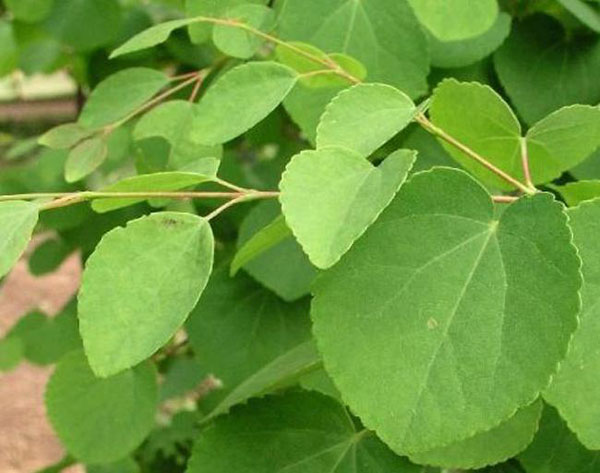
If it weren't for the lack of drought tolerance, Katsura Tree would have checked all the boxes to be Urban Approved. As long as the tree receives consistent moisture it will tolerate soil and aerial salt, as well as acidic or alkaline soil. With no diseases to speak of, it's practically the perfect urban tree as long as it's not sited where moisture is rarely available.
The scientific name Cercidiphyllum refers to the foliage of Katsura Tree bearing a striking resemblance to the foliage of Eastern Redbud (Cercis canadensis). However, Eastern Redbud has an alternate leaf arrangement, while Katsura Tree's foliage is opposite. The specific epithet japonicum refers to the tree's native range in Japan and eastern China.
Although listed as growing at a moderate rate, Katsura Tree is capable of rapid growth spurts in optimal conditions. Some trees have been reported to grow more than 4 feet per year when given ample moisture and adequate nutrition.
Read More: Katsura Tree Pests & Diseases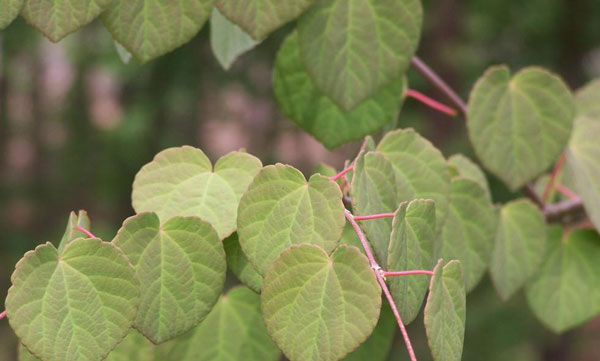
Weeping Katsura Tree (Cercidiphyllum japonicum 'Pendulum'): 15 to 25 feet high, with a similar to slightly greater spread, the branches of this even smaller type droop down, increasing visual interest.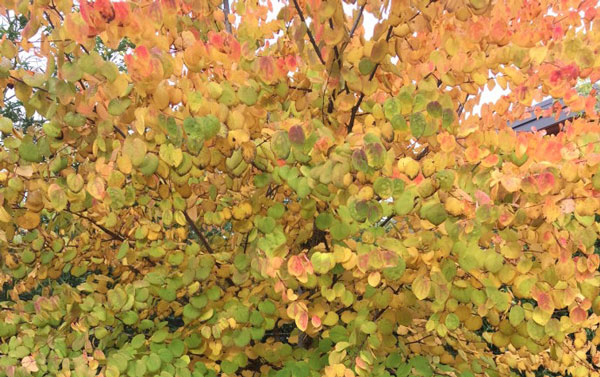
How to Grow Katsura TreeKatsura Tree Propagation with SeedsKatsura Tree Propagation with CuttingsKatsura Tree Propagation with layersHow to Care for Katsura TreeKatsura Tree Lighting RequirementsKatsura Tree SoilKatsura Tree WateringKatsura Tree Temperature & HumidityKatsura Tree FertilizerKatsura Tree PruningKatsura Tree Pests & DiseasesKatsura Tree VarietiesKatsura Tree Care FAQIs Katsura Tree fast-growing?Is Katsura Tree invasive?
How to Grow Katsura Tree
Katsura Tree Propagation with Seeds
Gather katsura tree seeds in autumn after they dry out and turn a solid, dark brown color. Crack open the pods and remove the seeds. Discard any obviously damaged or wrinkled seeds.Store the seeds in a paper envelope until early winter, approximately six to eight weeks after the first autumn frost. Keep the paper envelope in a dry, cool place until sowing.
Place the katsura trees seeds in a water-filled bowl. Soak the seeds for several hours to determine which are viable. Remove and discard any floating seeds.
Fill 6-inch pots with a moderately moist mixture of two parts peat, two parts loam and one part perlite. Firm the mix gently, then roughen the surface with your fingertips.
Sow two Katsura Tree seeds in each pot. Gently press them halfway into the surface of the peat mixture. Sprinkle a very thin layer of coarse sand around the seeds but do not bury them since they require light for germination.
Mist the sand liberally with a spray bottle to settle it. Cover each pot with a clear plastic bag. Place the covered pots inside the refrigerator for seven to ten days to chill. Keep the peat mixture barely moist on the surface.
Move the pots to a bright, sheltered area after the chilling period has ended. Choose a location with eight to ten hours of light daily, such as indoors near a large window. Do not expose the pots to direct sunlight.
Warm the pots with a propagation mat set to between 70 and 77 degrees Fahrenheit. Monitor the moisture level of the peat mixture, since the propagation mat will increase evaporation. Water whenever the mixture dries out on the surface.
Watch for germination in 10 to 20 days. Remove the clear plastic after sprouting. Remove the propagation mat in two weeks. Continue to add water whenever the surface of the peat mixture dries out.
Remove one of the Katsura Tree seedlings from each pot once they reach 2 inches in height. Keep the more vigorous of the two and snip the other off at soil level using small scissors.
Grow the Katsura Tree seedlings under bright, sheltered conditions during their first summer. Provide light shade at midday to prevent stress. Transplant them into the ground in autumn six to eight weeks before the first frost.

Katsura Tree Propagation with Cuttings
Preparing cuttings from a Katsura Tree is possible, but not as successful.Late spring and early summer are the best times to prepare cuttings from a Katsura Tree.
New growth is still soft and flexible at this stage, so these are softwood cuttings.
Types of cuttings that work well with Katsuratree
Young branches of a cercidiphyllum Katsura Tree, perfect for cuttings.There are two ways to make cuttings from a kastura Cercidiphyllum tree. These are stem cuttings and basal cuttings.
Stem cuttings – aren't very successful, sometimes success rates even drop down to single digits, as in one in ten. But it isn't hopeless at all, since it can also reach much higher levels if the conditions are right.
Basal cuttings – much higher success rate, but often more difficult to properly start. Indeed, these are taken from portions of a branch where stems connect. You can also use suckers that start shooting out from near the base of the trunk.

Katsura Tree Propagation with layers
Katsura Tree is also very successfully propagated with layerers.This is especially helpful for those katsura types that are weeping, like the ‘Pendula’ and the ‘Tidal Wave’.
Simply place large pots wherever branches reach to the ground. Given that sometimes branches are too short, you might need to set the pots up on a bench or stool.
Cross a branch across the top of the pot and anchor it down with a metal hoop. Make sure several leaf nodes reach into the pot. If need be, arch the branch down into the pot.
After that, fill the pot with a mix of garden soil and soil mix, heaping it all the way to cover the branch with about 4 inches of soil (10 cm).
Load the soil down with a couple larger rocks. Make sure any rain flows into the pot and not out of it, though.
In windy areas, stake the branch to make sure it doesn’t rip out of the pot or tip it over.
Roots will grow from the nodes. After a year (two when the growing season is short), you can cut the mother branch away and transfer the pot.
To straighten the sapling, if horizontal, simply transfer the entire clump to a larger pot – sideways.

How to Care for Katsura Tree
Katsura Tree Lighting Requirements
Katsura trees are understory trees, meaning they can be grown in partial shade. Even though they are more common in the southerly regions of their range, they can be grown in partial shade to keep their leaves cool in summer. In the North, though, provide them full sun because they achieve better fall-foliage color under these conditions.Katsura Tree Soil
It's most important that the soil is well-drained and relatively moist. Neutral to slightly acid soil pH is best, but the katsura tree can tolerate somewhat more acid as well as clayey soil.Katsura Tree Watering
Katsura trees require moderate watering, but they may need more frequent watering in dry places. It was once established. However, it is quite drought-tolerant. Maintain the soil moist but not wet until the tree becomes established. Then water according to the season.Katsura Tree Temperature & Humidity
Katsura tree is suitable for zones 4-8. It can tolerate extensive temperatures and is not fussy about humidity. Avoid watering overhead in wet seasons or climates to avoid leaf mildew.Katsura Tree Fertilizer
Recommend against fertilizing at planting time and during the first growing season in your garden. Plants need time to settle in before being pushed to grow. Most established plants grow best if fertilized with a light hand. Here at the Farm, we fertilize our specimen trees and shrubs just once -- in early spring -- with a light but even coverage of a balanced, granular fertilizer (such 5-10-10, 10-10-10, or an organic fertilizer). If a concentrated, water-soluble fertilizer is used, please follow the manufacturer's recommendations carefully.Katsura Tree Pruning
Usually, there's no need to prune the Katsura Tree. It grows quickly at the beginning, sometimes reaching two feet tall within the first year. Different types of katsura have different growth rates, though. Dwarf varieties are slower-growing. It grows into a lush, cone-like shape that tends to round off with age. When it has space, katsura sends branches out to the side that are almost horizontal. These can grow very large and impressive. One particular habit the tree has is that it tends to sprout suckers from the lower portions of the trunk. When left to grow, these turn into secondary trunks. It usually looks very nice, giving the tree a thick, full figure. If you wish your tree to look “tree-like”, i.e. with a single trunk, you'll have to prune these as soon as you notice them. Doing this once a year is fine, along with a yearly check for dead branches. Removing dead portions keeps the tree nicer to look at and reduces risks of accident due to falling branches. If you must prune to reduce the size of your tree, or balance its shape out, then it's best to do this in spring.Katsura Tree Pests & Diseases
Sun scald and frost-cracking can be problematic in dry, hot, and/or windy sites, although Katsura Tree has no major insect or disease issues to speak of. Siting Katsura Tree properly is the most important step of ensuring a healthy, thriving landscape plant.If it weren't for the lack of drought tolerance, Katsura Tree would have checked all the boxes to be Urban Approved. As long as the tree receives consistent moisture it will tolerate soil and aerial salt, as well as acidic or alkaline soil. With no diseases to speak of, it's practically the perfect urban tree as long as it's not sited where moisture is rarely available.
The scientific name Cercidiphyllum refers to the foliage of Katsura Tree bearing a striking resemblance to the foliage of Eastern Redbud (Cercis canadensis). However, Eastern Redbud has an alternate leaf arrangement, while Katsura Tree's foliage is opposite. The specific epithet japonicum refers to the tree's native range in Japan and eastern China.
Although listed as growing at a moderate rate, Katsura Tree is capable of rapid growth spurts in optimal conditions. Some trees have been reported to grow more than 4 feet per year when given ample moisture and adequate nutrition.
Read More: Katsura Tree Pests & Diseases

Katsura Tree Varieties
Red Fox Katsura Tree (Cercidiphyllum japonicum 'Rotfuchs'): Smaller than the species tree (30 feet tall, with a spread of 16 feet), it is one of the most colorful types, bearing purplish-bronze leaves in spring, greenish-bronze leaves in summer, and orangey-bronze fall foliage.Weeping Katsura Tree (Cercidiphyllum japonicum 'Pendulum'): 15 to 25 feet high, with a similar to slightly greater spread, the branches of this even smaller type droop down, increasing visual interest.

Katsura Tree Care FAQ
Is Katsura Tree fast-growing?
Although listed as growing at a moderate rate, Katsura Tree is capable of rapid growth spurts in optimal conditions. Some trees have been reported to grow more than 4 feet per year when given ample moisture and adequate nutrition.Is Katsura Tree invasive?
Katsura Tree (Cercidiphyllum japonicum) is not invasive.Latest Updated
- Benefits of Bugleweed - 7 Science-backed Health Benefits
- Bugleweed Dangers & Side Effects - Is It Poisonous?
- How to Plant Evergreen Trees - What You Should Know
- When to Plant Evergreens - Grow Guide for Evergreen Trees
- 12 Wonderful Evergreen Shrubs for Your Garden
- 12 Popular Evergreen Plants with Pictures for Beginners
- When And How To Prune A Lilac Bush Like a Pro
- How to Grow & Care for Lilac Vine (Hardenbergia Violacea)
- Japanese Lilac Tree (Syringa Reticulata) Care & Propagation Guide
- Shumard Oak Pros and Cons - What to Know
Popular Articles
- Winter maintenance of Antirrhinum Majus
- How to Grow Terminalia Mantaly Tree
- How to Grow and Care for Crossostephium Chinense
- How to grow Antirrhinum Majus in spring
- Peristeria Elata (Dove Orchid) Profile: Info & Care Guide
- Underwatered Snake Plant (Sansevieria Trifasciata) - Signs And How To Fix
- How to Care for Brazilian Jasmine Plant (Mandevilla Sanderi)
- How to Grow & Care for Graptopetalum Purple Delight in Summer
- Rosa Chinensis (China Rose): Plant Growing & Care Tips
- How to Care for Baby Sun Rose (Aptenia Cordifolia)